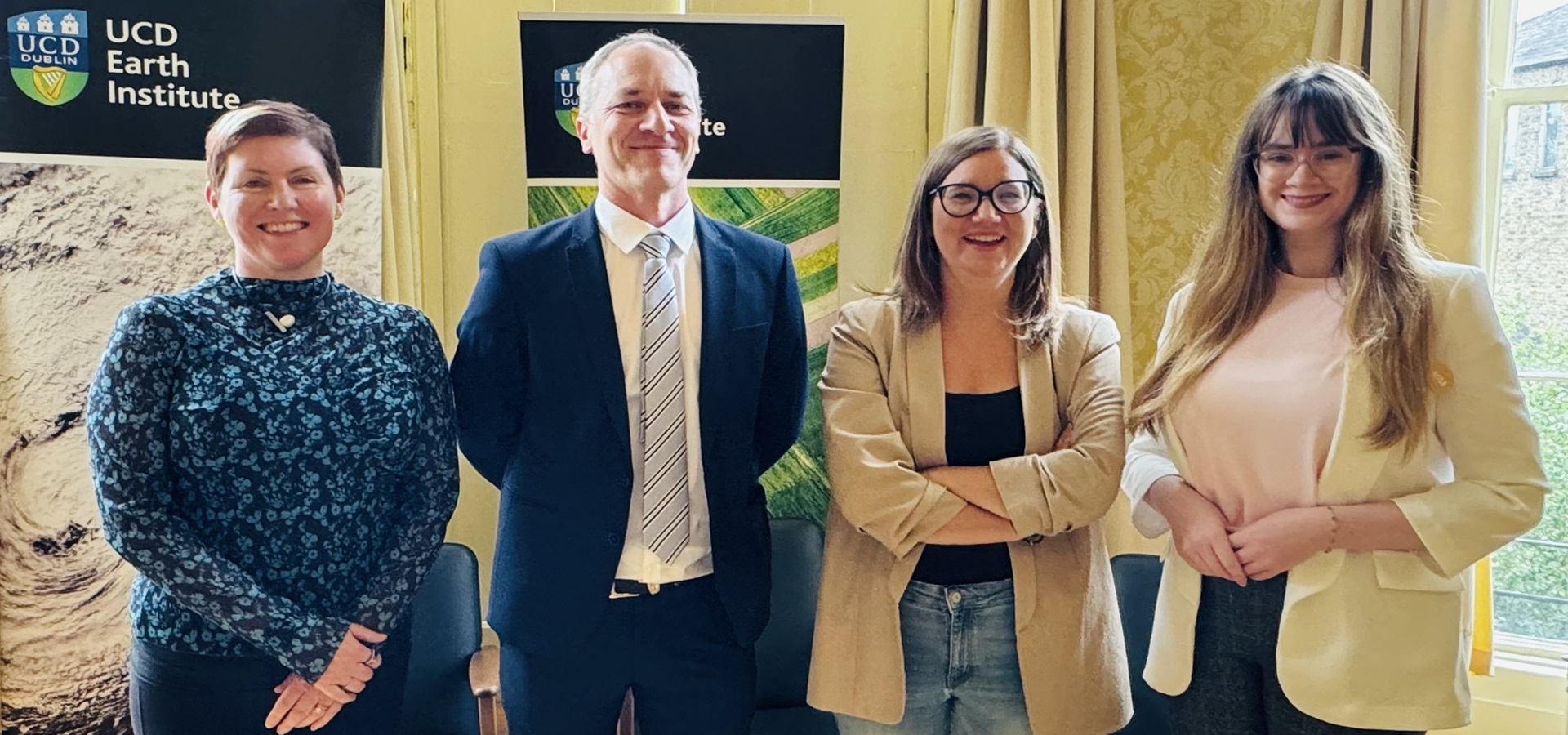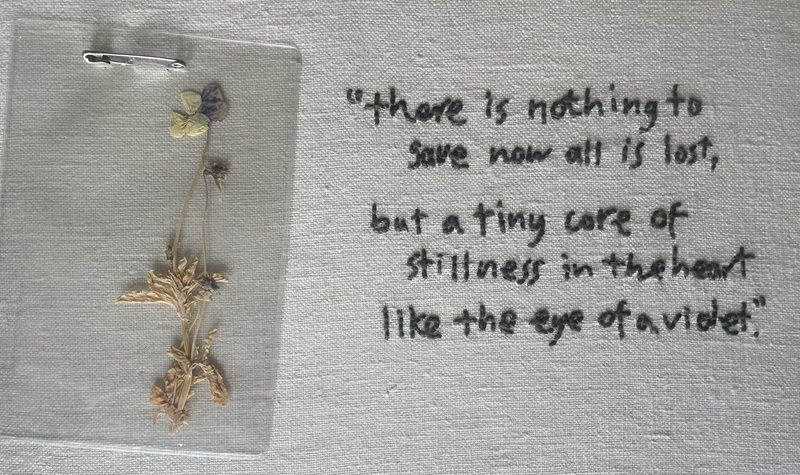Can we draw a parallel between the Earth and a bioreactor? In the following blog, Dr. Federico Cerrone, a senior postdoctorate researcher in the Bioeconomy SFI Research Centre (BiOrbic) at UCD, explores how Earth can be seen as a superorganism able to control the environmental conditions thanks to the cooperation and for the benefit of the living biodiversity within Her. A bioreactor, an apparatus in which a biological reaction or process is carried out, suffices a similar purpose. The following is an environmental microbiologist’s take on the Gaia hypothesis.
Why is highly biodiverse better? Numerous studies found that a synergistic effect is always present in highly biodiverse ecosystems. A forest is not just a plantation of trees. It is a living entity able to regulate her own environment and have cascading and beneficial effects in unsuspected ways over other ecosystems. An intimately connected environmental and social synergy is present in every thriving community. This is only thanks to the individual contribution of the population living within. Even bacteria are not excluded by this. In fact bacterial communities and the regulation of their own environment can be used as a paradigm of sociality and ecological healthiness as it happens in other ecosystems.
The microbiologist thinks macro
Environmental microbiologists study the interaction of microorganisms (i.e., a microscopic organism, like a bacterium, virus, or fungus) with their surrounding environment. The more we understand microbial metabolism the more we can see similarities with the processes of population dynamics and the (over)consumption of Earth resources by humans. Population dynamics is the study of changes of the size and structure of a population over time, taking in account the available resources, the population behavior (especially adaptations) and the occurring perturbations in the system.
Every living organism tends to find a balance with their surrounding environment by a mechanism of homeostasis. Homeostasis is composed of ὅμοιος (homoios) which means “similar” and στάσις (stasis) which means “standing still”; homeostasis therefore refers to a metabolic mechanism of maintaining adequate living conditions by fine-tune adjustments that buffer the effects of the surrounding environment. Another relevant concept is homeorhesis, from ὅμοιος (homoios) and ρεύση (refsi), that means “flowing”. Homeorhesis gives a sense of a more dynamic description of the behaviour of every living organism towards the establishment of a common trajectory after any initial stochastic (random) perturbation.
.jpg) |
| James Lovelock in 2005. Source: Wikimedia Commons. |
These two concepts together, can be considered interplaying mechanisms which living organisms tend to (maximising an ecosystemic equilibrium) within a more holistic general homeostasis at a higher scale (Earth-scale). These concepts are the two underpinning concepts of the Gaia hypothesis. The Gaia hypothesis, first proposed by the late scientist, environmentalist and futurist, James Lovelock, states that the Earth's surface is maintained in a habitable state by self-regulating feedback mechanisms involving organisms tightly coupled to their environment.
James Lovelock was the first to propose such an ecological idea where the Earth was considered as a living organism, powered by the photonic flux of the Sun. The Earth, thanks to a range of negative and positive feedbacks promoted by living organisms, maintains stable conditions for living organisms. Therefore the Earth can be considered as a living super-organism. This layered buffering mechanism found its ultimate foundation in maximising ecosphere biodiversity at a macro scale (Earth). Indeed, every self-regulating organism is dynamically using a range of metabolic adaptations to counteract the environmental constraints for its own well-being. This is also true at mesoscale for single living organisms, like microorganisms.
Multiple homeorrhetic dynamics adaptations contribute to the holistic homeostasis of the living organism itself. In a multicellular organism (such as animals), a population of cells organised in a range of interplaying tissues use metabolic homeostasis, continuous renewal, genetic adaptation to maximise fitness, and survival in a challenging environment.
The similarities between microbial and human adaptations
Applied environmental microbiology research maintains microbial cultures in a controlled environment (bioreactor) and takes advantage of the environmental conditions to maximise the benefit of the cultivated microorganisms. This is the microscale (bacteria). Carefully designed cultivation media try to select favourable traits in some bacterial metabolic pathways of interest. An environmental microbiologist experienced in considering a holistic approach is aware of the metabolic adaptations that the bacteria put in place to adapt to the ever-changing environment. Environmental fluctuations such as pH, dissolved oxygen, nutrients (firstly nitrogen, phosphorus and potassium as NPK, but also micro elements, light conditions, ions) are counterbalanced by microbial metabolic responses, adaptations and population signalling. This is the microscale interplaying with its own mesoscale (bioreactor/ecosystem).
Similarly, human beings (considered here as Earth microorganisms) have adapted to a variety of ecosystems, which they have decided to live-in and maximise their well-being in. Human beings are heavily involved in the material/nutrient uptake from Earth, accelerating some material uptakes beyond recovery. Earth is reacting with a range of buffering mechanisms that aim to replenish these resources (natural afforestation, extinction, viral zoonoses, micro-organisms fossilization, micr-algae sedimentation and geological erosion).
Two aspects of the implication of this phenomena have to be taken in consideration: scale and timing. All the mentioned examples are buffering the effect that human beings have caused in the short-term on the ecosphere. For the same analogy, environmental microbiologists are counteracting the challenges of the accelerated microbial uptake (by increasing the dissolved oxygen, increasing the carbon source, minimising nutrient gradients in the bioreactor, buffering the pH, adding critical nutrients and minimising the stress caused by exopolysaccharide with antifoam).
The timely action of the environmental microbiologist is intended to maximise the survival of the bacteria, but the homeostatic metabolism of the bacteria are already moving in the direction of their own survival. Environmental microbiologists skilled in fermentation technology often aim at producing a concentrated population of microorganisms in the bioreactor; this is called: a high cell density fermentation. The similarity with human built megacities can be immediate. Also cities have an urban ecological footprint over the surrounding ecosystem and even with extremely far-reaching impacts. Even if the concentrated population and the urban planning tend to lead to a more resource efficient scenario, the bigger the scale of the city the higher the impact. Also, the bigger the city, the more rebound effects it creates. A rebound effect is when either an eco-efficient technology or either a scenario are available the more of their use is occurring. This ultimately causes a higher ecological burden because of the more frequency of usage. A higher than background microbial population is causing negative feedbacks (based on oxygen consumption, overconsumption of resources, unsustainable metabolic stresses) that are heavily impacting on the surrounding ecosystem. This microbial simplification of an ecosystem impact could help us derive lessons about our own behavior and ecological footprint. The microbial microcosm is a perfect example of the first law of ecology: everything is connected with everything else or told with James Lovelock’s words: Nature favors those organisms which leave the environment in a better shape for their progeny to survive. This is one of the numerous examples of Lovelock's long-lasting cultural legacy.

An artistic representation of a microbiologist looking at different scales that investigates the welfare of the observed biological entity.
Essay first published 18 October 2022.
About the author
Dr Federico Cerrone is a senior postdoctorate researcher in the Bioeconomy SFI Research Centre (BiOrbic) based at UCD. He is the project leader of an Agriculture Spoke project for biobased commodities production by fungal biomass utilising fermentation technology. He has over a decade of research experience in fermentation strategies for bio-based chemical productionand his multidisciplinary research interests lies at the cross between microbial biotechnology, material science and sustainability. His research vision and mindset try to merge innovative material applications of microbial biopolymers with an attentive holistic view for a wider societal impact face to the global change survival challenge.
About the series
The A-Z of Environmental, Climate and Sustainability Research is a new series of short essays by UCD postdoctoral and postgraduate researchers, technical and research support staff, about their work. The series is developed and curated by the Earth Institute Associate Member Committee led by Hannah Gould, a PhD student at BiOrbic and the UCD School of Architecture, Planning and Environmental Policy, and Earth Institute Communications and Engagement Officer Liz Bruton. If you'd like to submit a piece for the series do get in touch!
Find out more about the Anthropocene with Nick Scroxton, Bees with Katherine Burns, Cannabis with Caroline Dowling, Degrowth with Ciarán O'Brien, Education with Georgina Fagan, Finance with Shane McGuinness, Gaia with Federico Cerrone, Hydrometry with Kate de Smeth, Innovation with Hannah Gould, Justice with Lauren Minion, Kelp with Priya Pollard, Landscape part 1 with Tomas Buitendijk, Landscape part 2 with Amy Strecker and Amanda Byer, Reusing microbial ‘bathwater’ for sustainable drug production with Laura Murphy, and Mammals with Virginia Morera-Pujol in our latest essays.
Sources and further reading
Callahan et al 2014. Rapid evolution of adaptive niche construction in experimental microbial populations. Evolution international journal of organic evolution. 68-11, 3307-3316. DOI: https://doi.org/10.1111/evo.12512
W. Ford Doolittle 2019. Making evolutionary sense of Gaia. Trends in Ecology & Evolution, CellPress REVIEWS. 34-10 889-894. DOI: https://doi.org/10.1016/j.tree.2019.05.001
Guo et al 2021. Microbial biofilm community dynamics in five lowland streams. Science of the Total Environment 798, 149169. DOI: https://doi.org/10.1016/j.scitotenv.2021.149169
Istvan et al 2022. The evolution of microbial facilitation: sociogenesis, symbiogenesis, and transition in individuality. Frontiers in Ecology and Evolution 10, 1-20. DOI: https://doi.org/10.3389/fevo.2022.798045
Lovelock and Margulis 1974. Atmospheric homeostasis by and for the biosphere: the gaia hypothesis. Tellus 26, 2-10. DOI: https://doi.org/10.3402/tellusa.v26i1-2.9731
Mamontov et al 2007. Modelling homeorhesis by ordinary differential equations. Mathematical and computer modelling 45, 694-707. DOI: https://doi.org/10.1016/j.mcm.2006.07.015
Minarovits 2021. Anaerobic bacterial communities associated with oral carcinoma: Intratumoral, surface-biofilm and salivary microbiota. Anaerobe 68, 102300. DOI: https://doi.org/10.1016/j.anaerobe.2020.102300
Olson et al 2022. Dynamics of the normal gut microbiota: A longitudinal one-year population study. Cell Host Microbe 11;30(5), 726-739. DOI: https://doi.org/10.1016/j.chom.2022.03.002
Pausas et al 2022. Feedbacks in ecology and evolution. Trends in Ecology & Evolution, Volume 37, Issue 8, 637-644. DOI: https://doi.org/10.1016/j.tree.2022.03.008
Sanchez et al 2013. Feedback between Population and Evolutionary Dynamics Determines the Fate of Social Microbial Populations PLOS Biology 11,4 e1001547. DOI: https://doi.org/10.1371/journal.pbio.1001547
Storch et al 2021. Biodiversity dynamics in the Anthropocene: how human activities change equilibria of species richness Ecography 4, 1-19. DOI: https://doi.org/10.1111/ecog.05778
Wang et al 2021. Cell density-dependent regulation of microcystin synthetase genes (mcy) expression and microcystin-LR production in Microcystis aeruginosa that mimics quorum sensing. Ecotoxicology and Environmental Safety 220, 112330. DOI: https://doi.org/10.1016/j.ecoenv.2021.112330

